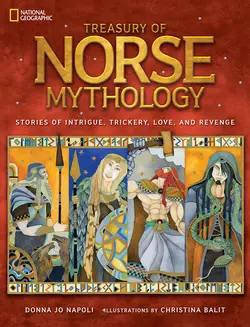Treasury of Norse Mythology: Stories of Intrigue, Trickery, Love, and Revenge

Christina Balit и National Kids
Тип: электронная книга
Жанр: Детская проза
Язык: на английском языке
Стоимость: 1228.37 ₽
Статус: В продаже
Издательство: HarperCollins
Дата публикации: 16.04.2024
Отзывы: Пока нет Добавить отзыв
О книге: Treasury of Norse Mythology: Stories of Intrigue, Trickery, Love, and Revenge, электронная книга авторов Christina Balit и National Kids на английском языке, в жанре детская проза